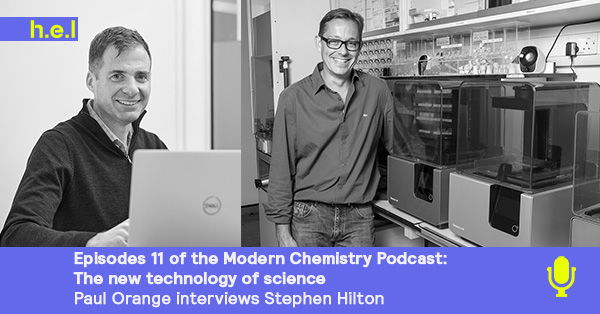Stephen Hilton
The new technology of science

Episode 11 of the modern Chemistry podcast is a wide-ranging interview with the self-declared ‘Scientist, less as a chemist’ Stephen Hilton, Associate Professor at University College London, School of Pharmacy. Steve uses 3D printing, virtual reality, and accessible automation to support his research. We talk about the benefits of these tools and how they can open up scientific research, especially in the field of flow chemistry.
Our theme music is “Wholesome” by Kevin MacLeod
Music from Film Music
License: CC BY
Connect with me (Paul) on LinkedIn.
We mention Kevin – Dr. Kevin Lam, a previous podcast guest on episodes 5 and 6. You can listen to this episode here.
Terms used during interview
- Arduino – An open-source electronics and software platform.
- Raspberry Pi – Similar to Arduino, Raspberry Pi is an accessible electronics and programming platform – more details at
- FDM – fused deposition modeling – One of the most common 3D printing methods. Fused deposition modeling involves feeding a thermoplastic filament into the 3D printer. The filament is heated to its melting point through a heated nozzle and then extruded onto the build platform, tracing the part dimensions specified by the design. As the first full layer is finished, the print head moves up by one layer height before tracing the next layer. This continues, layer-by-layer, until the part is complete.
- SLA – Stereolithography – Stereolithography was the first 3D printing technology invented and involves using a UV laser to cure liquid photopolymer resins. It’s the best 3D printing technology for intricate models with complex geometries.
- Flow Chemistry – or continuous chemistry is where the ingredients for the reaction are continually pumped into a reaction chamber. The reaction chamber is often some form of a tube, with a catalyst held in place. The reaction chamber is often heated and/or pressurized, and the resulting product will continuously flow out of the reactor as long as source ingredients are fed in. More information can be found on Wikipedia, Thingiverse, and Tinkercad.
You can connect with Steve via LinkedIn and Twitter, and you can also visit his website for more information.


